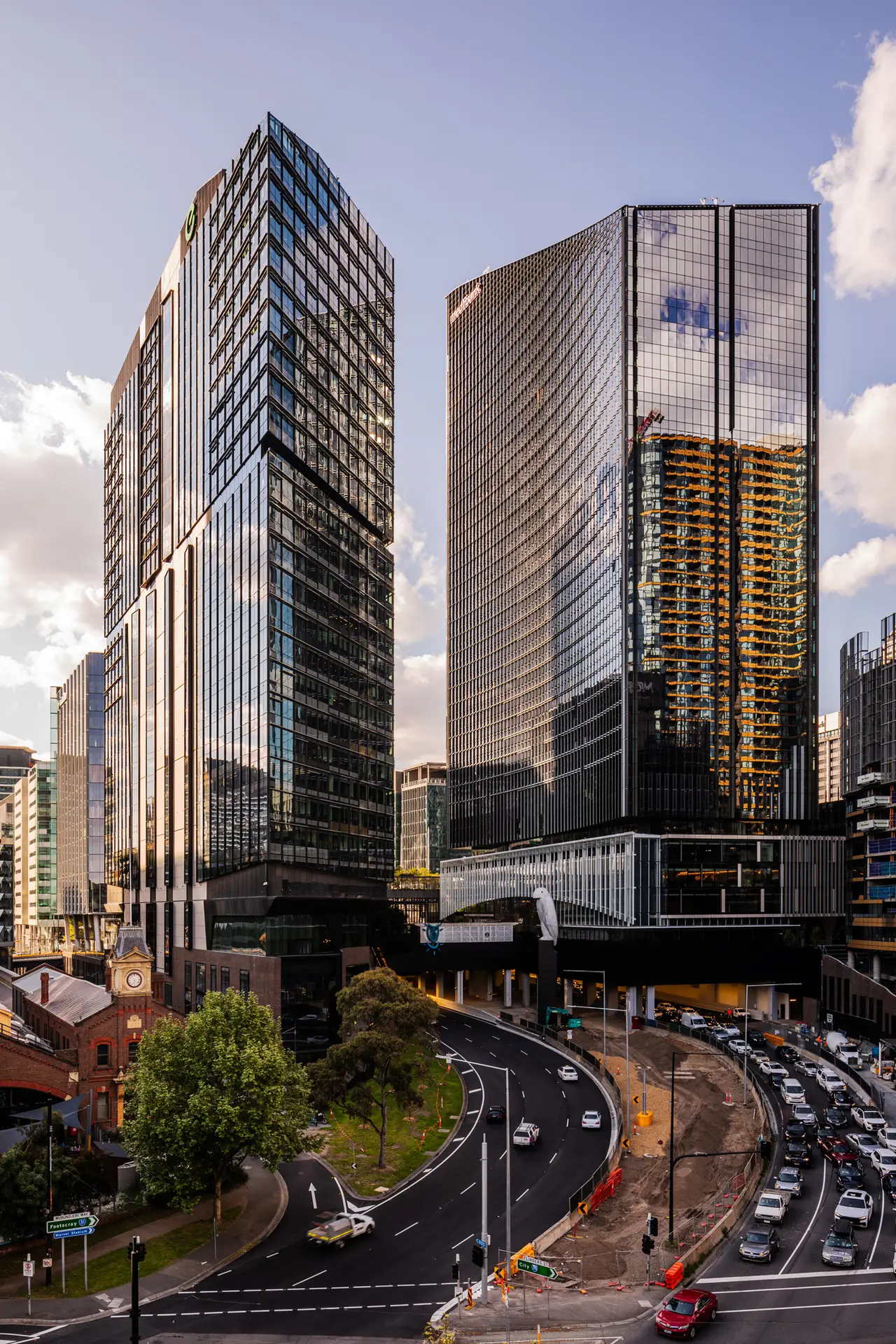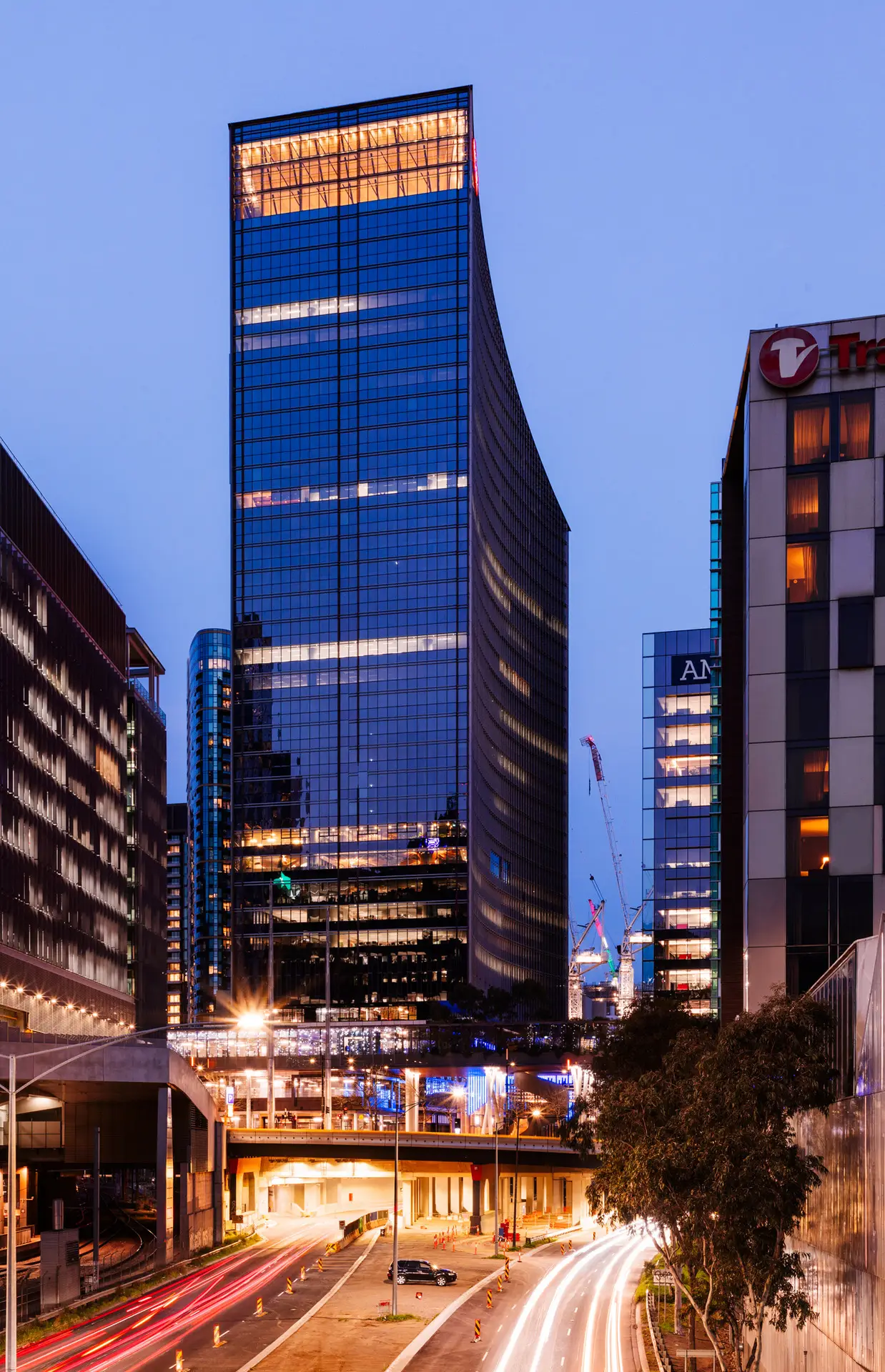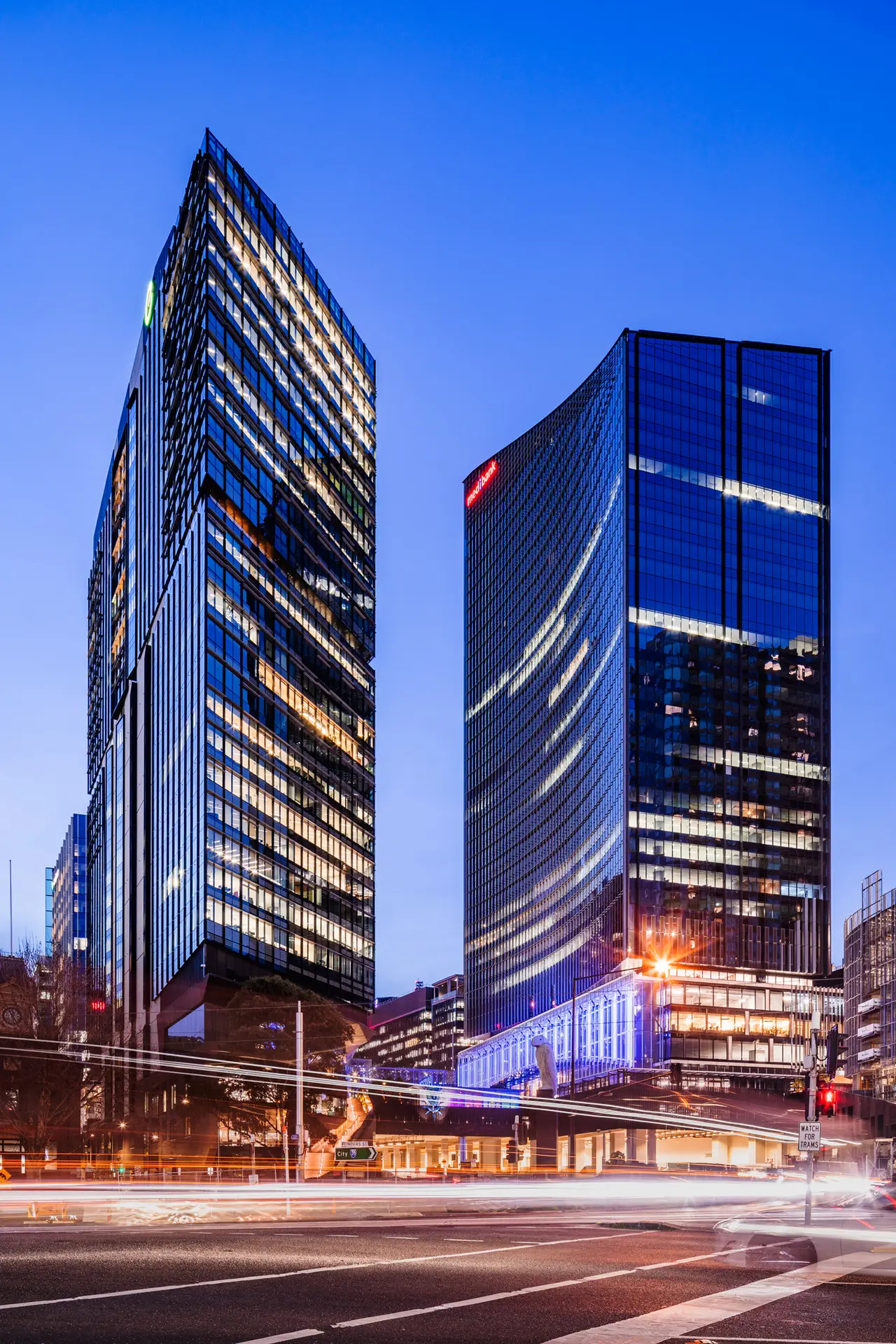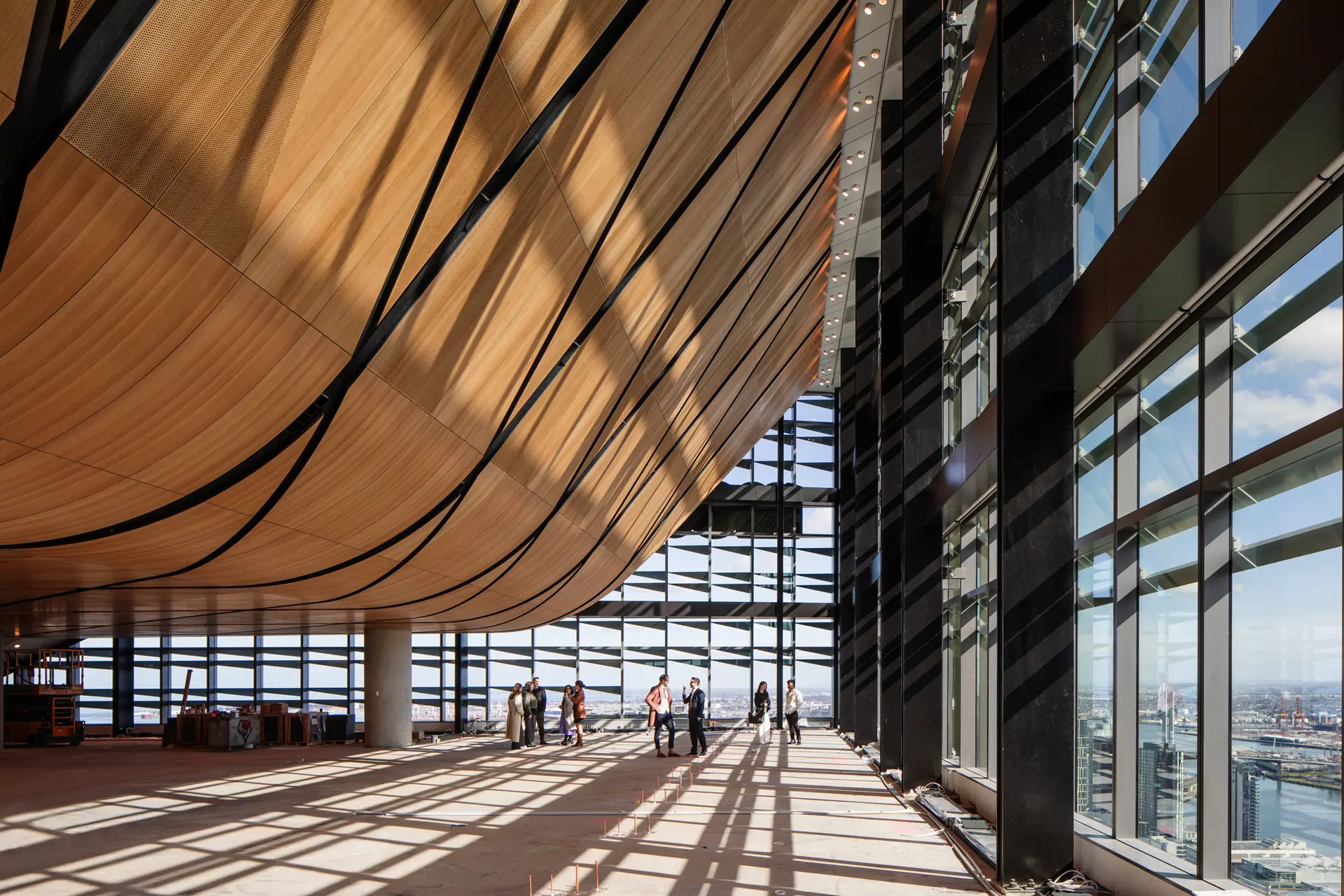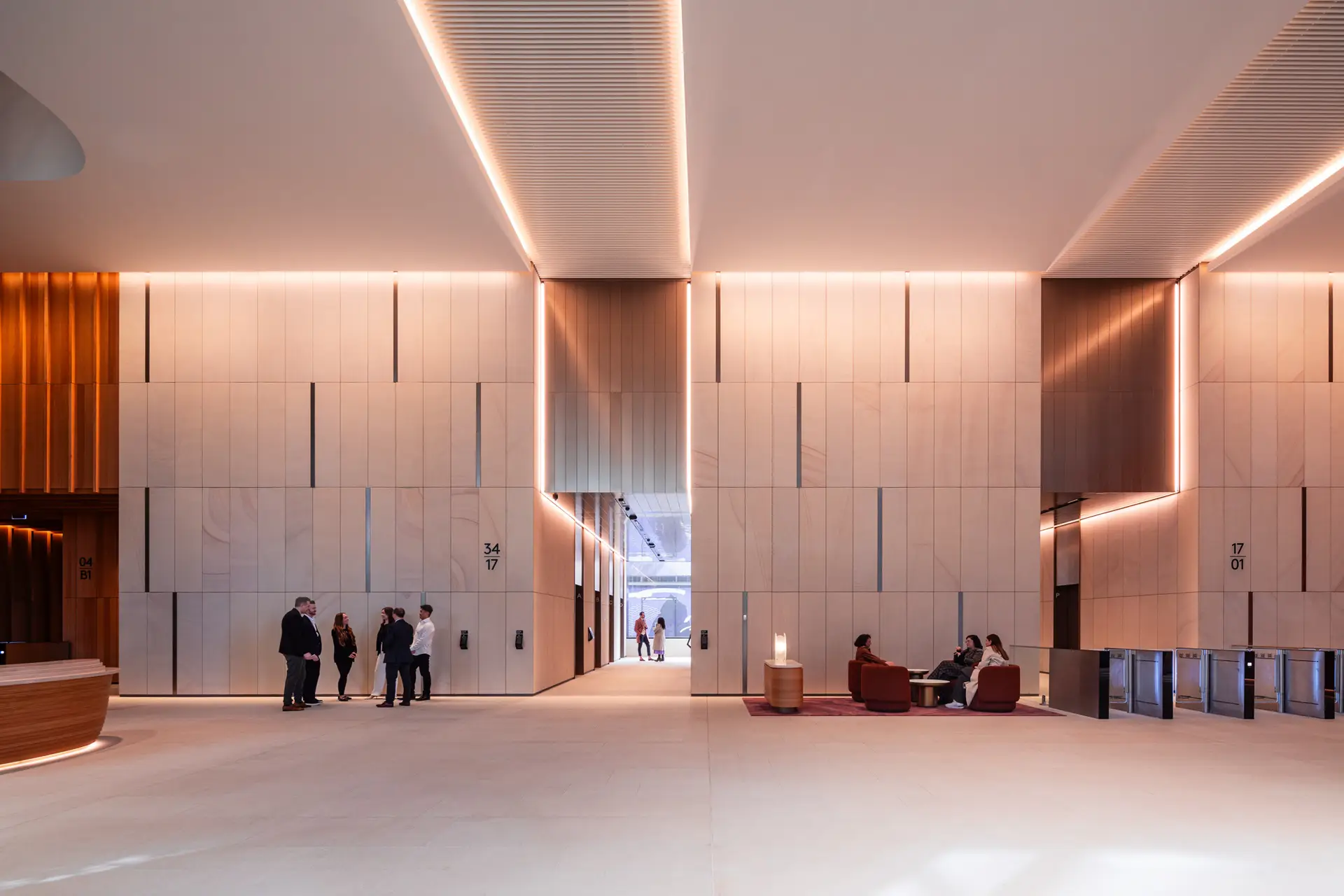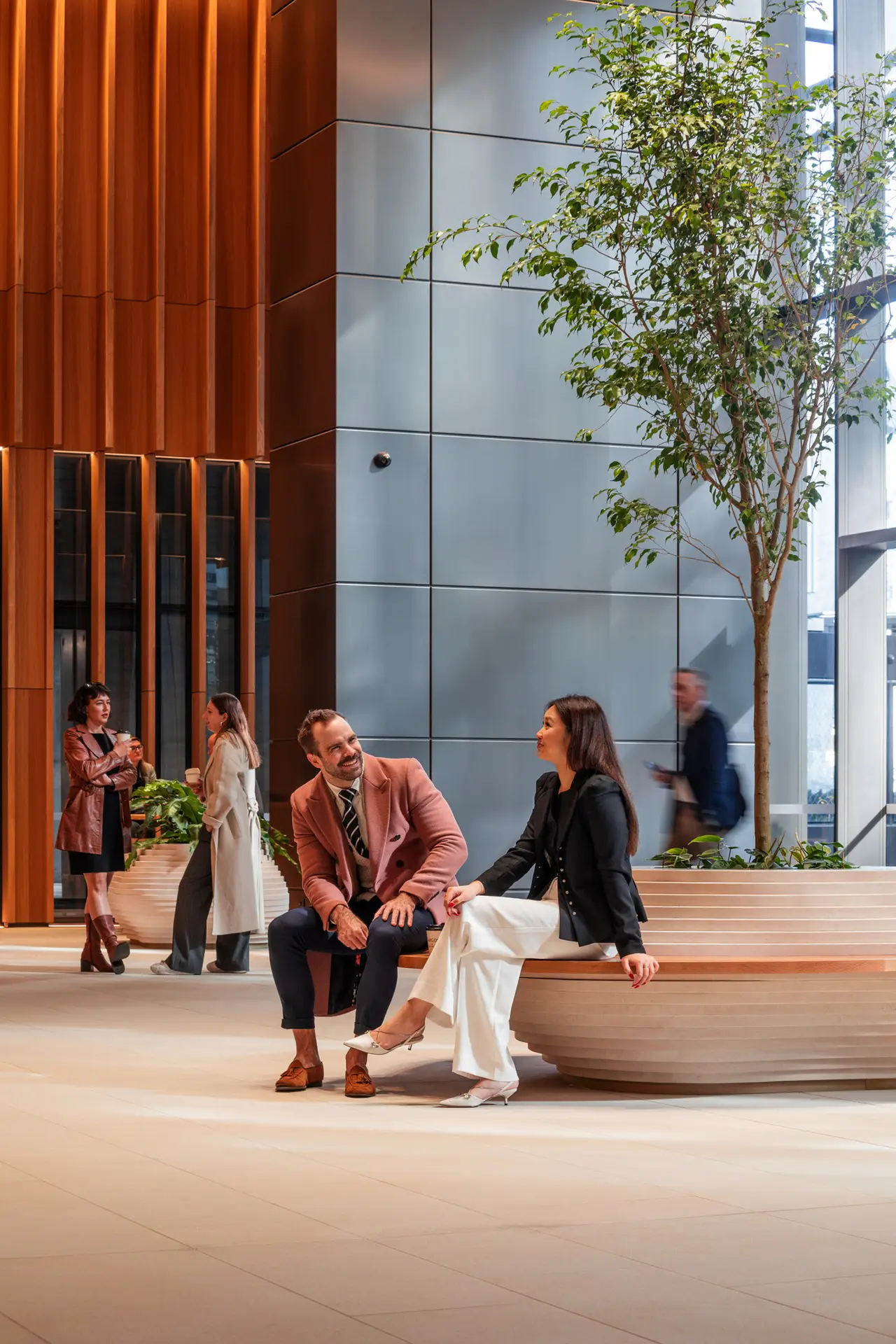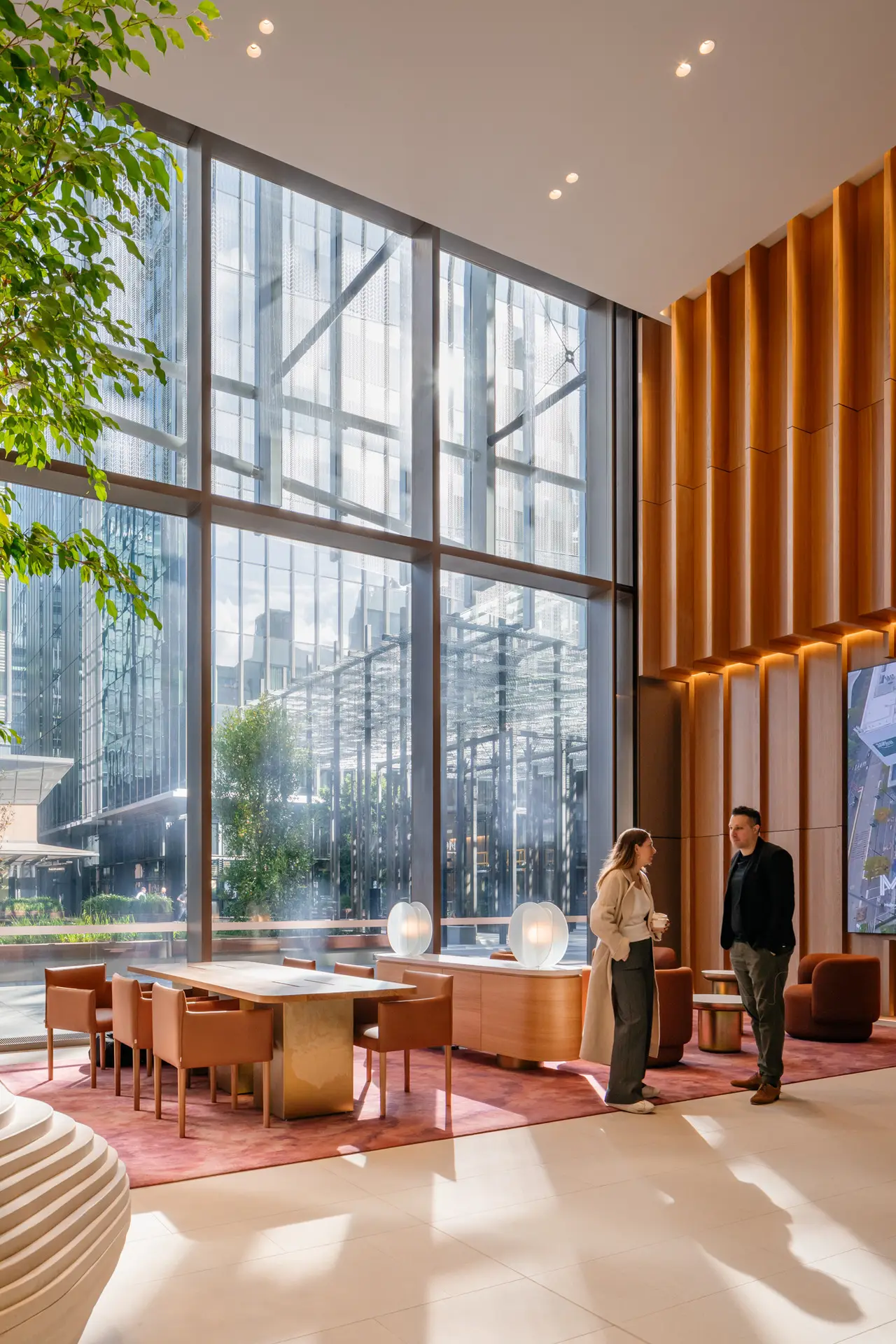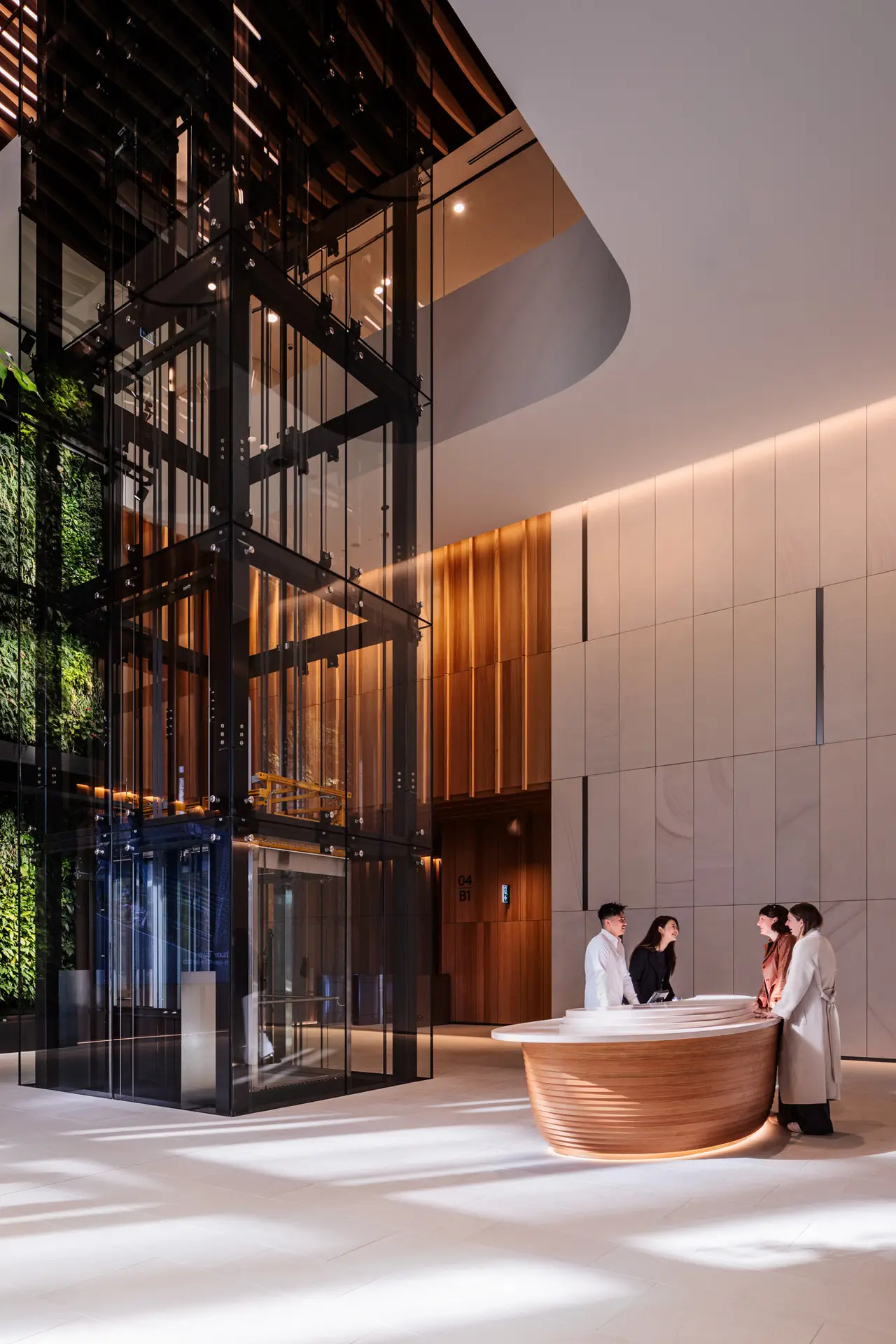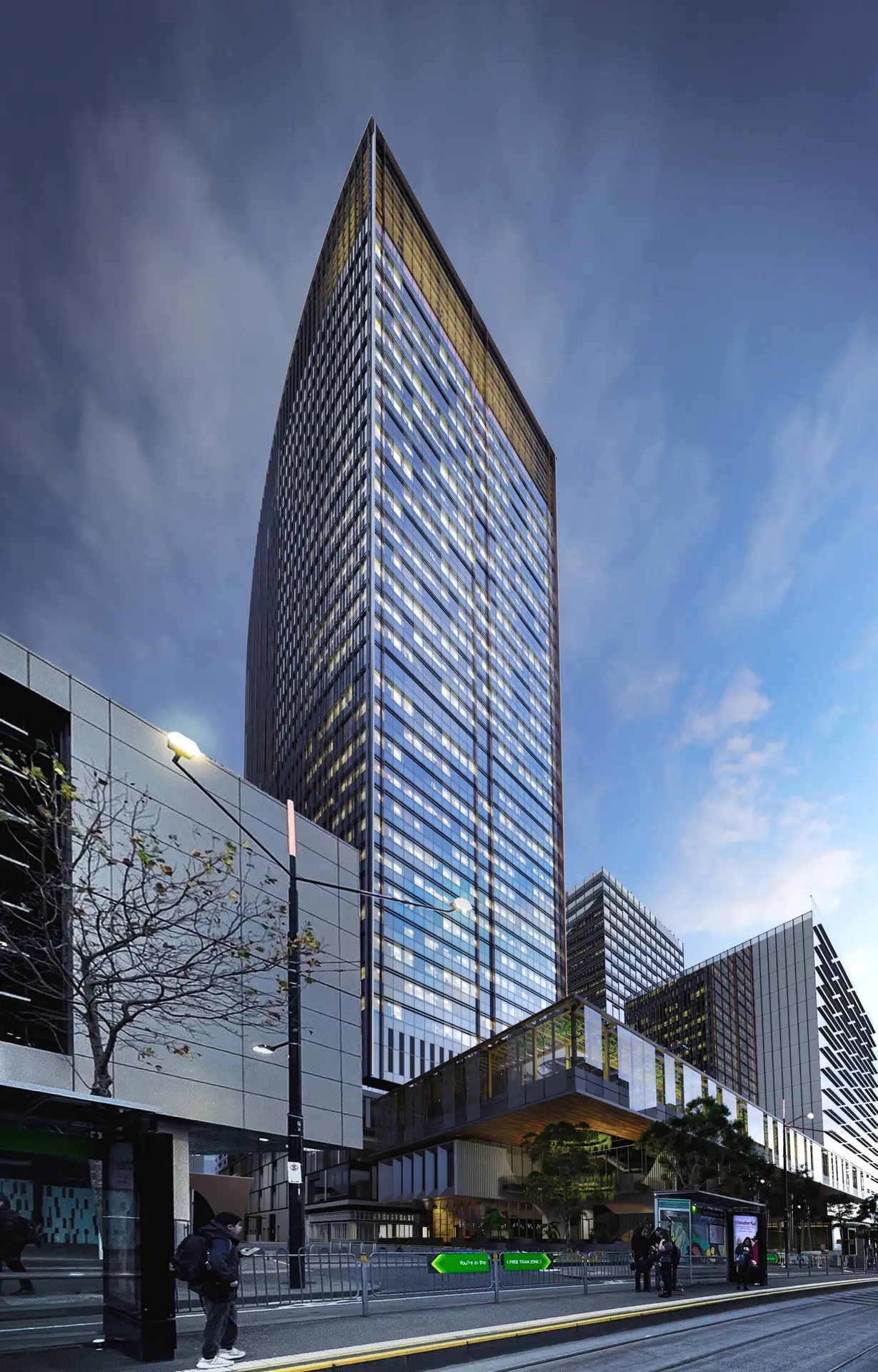Melbourne Quarter Tower | Woods Bagot

2025 National Architecture Awards Program
Melbourne Quarter Tower | Woods Bagot
Traditional Land Owners
wurundjeri people of the Kulin nation
Year
Chapter
Victoria
Category
Builder
Photographer
Media summary
As the third and final commercial tower within the Melbourne Quarter precinct, MQT covers 34 tenantable stories, the top seven levels featuring cascading rooftop floorplates, with a total of 70,000 square metres of net-lettable office floor, and 4,000 square metres of retail. Straddling Wurundjeri Way, MQT realises one of the key urban objectives of the masterplan: tying together the built form along Collins Street, connecting the CBD and Docklands. Maximising the volumetric titles, the tower rises directly over the freeway, returning valuable inner-city space back to the public. The resulting tower combines form, unique facade articulation and materiality, it’s unique sloping roof and curved façade embracing the public square and shouldering away from the freeway.
“Woods Bagot was tasked by Lendlease with creating a sustainable building that prioritised exceptional design while maximising the city views that envelop the site. They exceeded expectations. From the striking curved profile of the upper levels (now a prominent feature of the CBD skyline), to the grand sense of arrival in the sandstone lobby, the unique identity achieved for Melbourne Quarter Tower is a testament to their success. As our trusted project partner, the Woods Bagot designed not only an impressive 34-storey building, but a workplace of the future, demonstrating global leadership in sustainability and wellness targets.”
Client perspective
Project Consultant and Construction Team
AECOM, Structural Engineer
AECOM, Acoustic Consultant
WSCE, Hydraulic Consultant
LCI, Electrical Consultant
Glen Thompson, LCI, Lighting Consultant
Oculus, Landscape Consultant
ARUP, Facade Engineer
McKenzie Group, Building Surveyor
Lendlease, ESD Consultant
Contour, Town Planner
